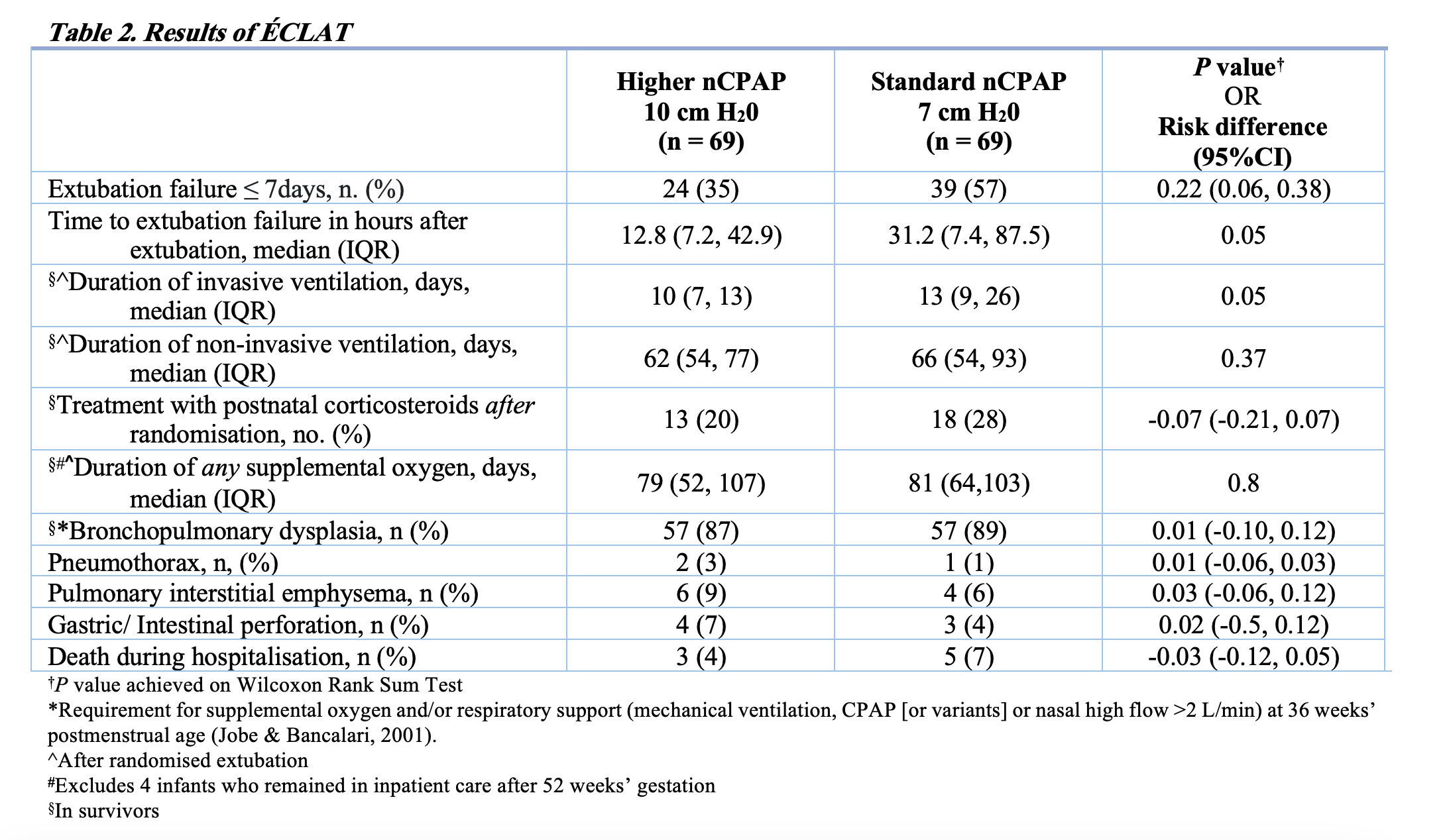Neonatal Clinical Trials
Neonatal Clinical Trials 1
240 - Extubating Extremely Preterm Infants: Results of ÉCLAT
Friday, April 28, 2023
5:15 PM - 7:15 PM ET
Poster Number: 240
Publication Number: 240.127
Publication Number: 240.127
Anna M. Kidman, University of Melbourne, Parkville, Victoria, Australia; Brett J. Manley, The Royal Women's Hospital, Melbourne, Australia, Parkville, Victoria, Australia; Atul Malhotra, Monash University, Melbourne, Victoria, Australia; Friederike Beker, Queensland University, Brisbane, Queensland, Australia; Peter Davis, University of Melbourne, Melbourne, Victoria, Australia; Risha Bhatia, Monash Children's Hospital, Clayton, Victoria, Australia

Anna M. Kidman, BSc CNS (she/her/hers)
PhD Scholar
University of Melbourne
The University of Melbourne Melbourne Medical School
Parkville, Victoria, Australia
Presenting Author(s)
Background: Many extremely preterm infants (< 28 weeks’ GA) require intubation and ventilation. Clinicians aim to extubate to non-invasive respiratory support, most commonly nasal continuous positive airway pressure (nCPAP), as soon as possible to decrease the harms associated with invasive ventilation. After extubation, up to 60% of extremely preterm infants require reinsertion of the endotracheal tube. There is little evidence to guide clinicians on the optimal nCPAP level to reduce the risk of extubation failure.
Objective: To determine whether extubation to a higher nCPAP range (9-11 cm H2O) reduces extubation failure and reintubation compared with a standard nCPAP range (6-8 cm H2O).
Design/Methods: In this multicenter randomized controlled trial, extremely preterm infants were assigned to either a higher nCPAP range of 9-11 cmH2O or a standard nCPAP range of 6-8 cm H2O at the first extubation attempt. The primary outcome was extubation failure, defined as 1) FiO2 0.20 or more above the baseline FiO2 prior to extubation; 2) pH < 7.20 and partial pressure of carbon dioxide >60 mm Hg; 3) more than one apneic episode requiring intermittent positive-pressure ventilation within a 24-hour period, or six or more apneic episodes requiring stimulation within six consecutive hours; or 4) an urgent need for reintubation and mechanical ventilation, within 7 days. Enrolment occurred at three Australian Neonatal Intensive Care Units (NICUs) between March 2019 and July 2022.
Results: 138 infants were randomized. Maternal and infant demographics for both groups were similar. (Table 1).
Extubation to a higher nCPAP range of 9-11 cm H2O reduced the risk of extubation failure compared with the standard pressure range of 6-8 cm H2O (RD -0.22, 95% CI -0.37, -0.04). There were no important differences in rates of secondary outcomes or incidence of adverse events between groups (Table 2).
Conclusion(s): Extubation to a higher nCPAP range of 9-11 cm H2O may reduce rates of extubation failure in extremely preterm infants.


